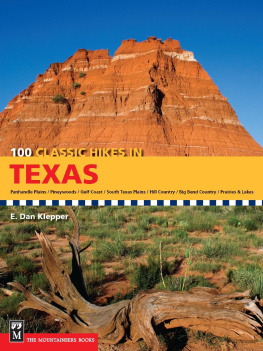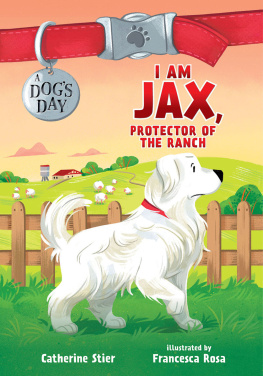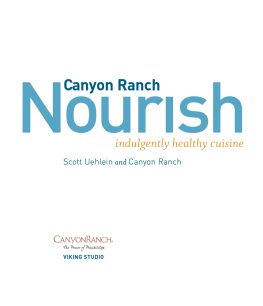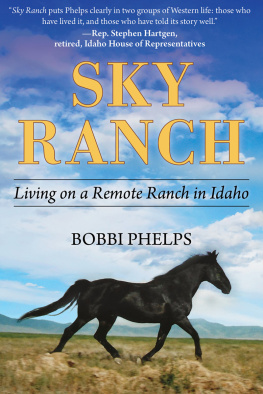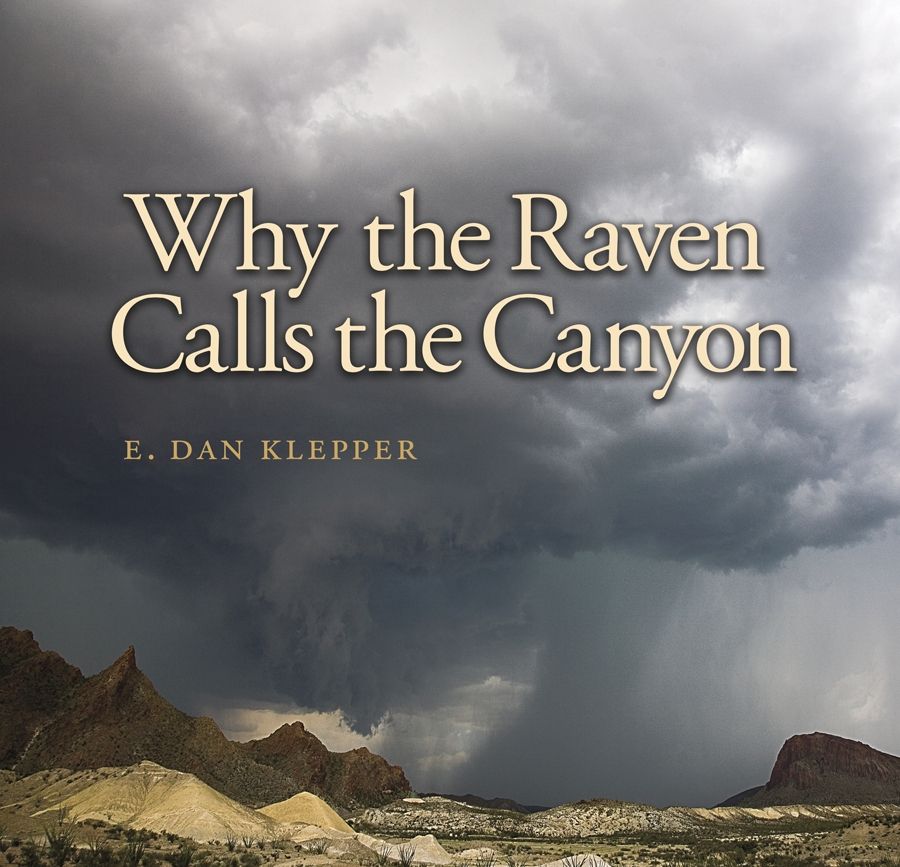Why the Raven Calls the Canyon

NUMBER TEN: CHARLES AND ELIZABETH PROTHRO TEXAS PHOTOGRAPHY SERIES
Why the Raven Calls the Canyon
OFF THE GRID IN BIG BEND COUNTRY
E. Dan Klepper
TEXAS A&M UNIVERSITY PRESS
COLLEGE STATION

Copyright 2017 by E. Dan Klepper
All rights reserved
First edition
This paper meets the requirements of ANSI/NISO Z39.48-1992 (Permanence of Paper).
Binding materials have been chosen for durability.
Manufactured in China by Everbest Printing Co. through FCI Print Group
LIBRARY OF CONGRESS CATALOGING-IN-PUBLICATION DATA
Names: Klepper, E. Dan, author, photographer.
Title: Why the raven calls the canyon: off the grid in Big Bend Country / E. Dan Klepper.
Other titles: Charles and Elizabeth Prothro Texas photography series; no. 10.
Description: First edition. | College Station: Texas A&M University Press, [2017] | Series: Charles and Elizabeth Prothro Texas photography series; Number ten | Includes index.
Identifiers: LCCN 2016030145 (print) | LCCN 2016031272 (ebook) | ISBN 9781623494933 (cloth: alk. paper) | ISBN 9781623494940 (ebook)
Subjects: LCSH: Big Bend Region (Tex.)Pictorial works. | Ranch lifeTexasBig Bend RegionPictorial works. | Self-reliant livingTexasBig Bend RegionPictorial works. | Sustainable livingTexasBig Bend RegionPictorial works. | Klepper, E. DanTravelTexasBig Bend RegionPictorial works. | Photography, Artistic.
Classification: LCC F392.B54 K55 2017 (print) | LCC F392.B54 (ebook) | DDC 976.4/93dc23
LC record available at https://lccn.loc.gov/2016030145
To Rodrigo Navarrete Trevizo


CONTENTS
, by Bill Wright

FOREWORD
E. Dan Klepper has written and photographed a fine book. It encompasses the overwhelming beauty of the Big Bend in far west Texas and at the same time describes the gritty reality of living off the grid in a harsh and unforgiving geological wonderland. But there is more.
Kleppers photographs of the land, the animals, and the spiny plants elevate his work to a new level in Big Bend photography. Yes, there is the indisputable beauty of the landimpossible to ignorebut it is presented in compelling ways. His photographs demand to be studied, not just admired in a cursory manner. His work is not just another photography book to lay on the coffee table in mute testimony to a passing interest in the rough edges of the state.
Kleppers talents as an image maker, artist, and writer have been hewn by a lifetime of experience. He works in many media: sculpture, painting, and performance as well as photography. His small studio is crammed with diverse itemssome significant perhaps to him alone, while others reach toward his many visitors. He dissects experience as he would a book cabinet, repurposing the components into a statement of their own while retaining an echo of the original.
This is what he has done with the experience of living off the grid. He has taken it apart, keeping the good and inspirational while discarding what is dysfunctional in a modern world. In his photographs and text, he dissects the Big Bends allure of a simpler, less complicated life, placing it in sharp contrast to the realities of urban routine: grocery stores, malls, hospitals, and easy entertainment as well as the need for police protection, traffic jams, pollution, and noise.
When visitors are seduced by the color, the vast expanse, the air, and the light of the Big Bend, they seldom realize the difficulty of embracing a simpler life in the twenty-first century. Klepper points his photographs and first-person text to the realities of the other sidethe hard side. He notes the ravens song: listening to the ravens scour the Rio Grande River canyon near-by, their rasping calls echoing off the canyon walls, a raw song sounding in part rough and dispassionate and at times, it seemed, full of joy.
This is the story of Kleppers seven years living off the grid in the Big Bend: rough, dispassionateand full of joy.
Bill Wright
Abilene, Texas
May 29, 2016
ACKNOWLEDGMENTS
My sincere gratitude to Shannon Davies, Thom Lemmons, and the people of Texas A&M University Press for recognizing merit in this work; to David Sleeper, who integrated his talents and the pursuit of ideals and independence into the Fresno Ranch legacy; to Jeanne Norsworthy and her estate, whose foresight and good will ensured that all Texans have the opportunity to experience Fresno Ranch and its inspiration; and to Adam Muhlig, astute editor, companionable wit, and great friend.


INTRODUCTION
From 2006 to 2013, I divided my time between Marathon, fifty miles north of Big Bend National Park, and Fresno Ranch, an abandoned, off-the-grid horse-and-mule operation located along the Rio Grande. Relatively uninhabited for almost a decade, the ranch encompassed more than seven thousand acres of springs, canyons, and volcanic peaks. In 2006, absentee owners recruited Rodrigo Trevizo, a friend of mine and local state park superintendent, to keep an eye on the place. Two years later he moved into the ranchs adobe studio, determined to bring the rudimentary infrastructure of the ranch back to life. I joined him for weeks at a time, lending a hand to unearth the ranchs water system, repair livestock corrals, and restore the solar power, all while adjusting to the day-to-day challenges of living off the grid. With Trevizos help, Fresno became part of Big Bend Ranch State Park, at over three hundred thousand acres the largest state park in Texas.
Fresno Ranch was established in the 1900s as a 640-acre section bordered by the river at its confluence with Fresno Creek and present-day FM 170. During the 1980s, another ten sections were added, including nine sections up Fresno Canyon and an additional mile of riverfront. At one point, Fresno also covered the Picachos, a 5,000-acre ranch directly across the river in Mexico.
Ancient campsites and historic ruins litter the desert terrain around Fresno, sharing a robust cultural history with defunct mercury mines and remnant candelilla wax camps. A collapsed magma dome, so large it can be detected from space, dominates much of the ranchs northeastern horizon. Among Fresnos hand-built attributes, a 2,000-square-foot adobe painting studio lies at its heart, constructed for the late Jeanne Norsworthy, Texas artist and granddaughter of George B. Dealey, publisher of the Dallas Morning News .
Fresnos natural world shares the allure of wild places found across the entire Big Bend region. The inscrutability of this west Texas country inspires lifelong appreciation for its rare natural beauty as well as an unorthodox creativity, resulting in artistic endeavors like this one, and often rousing those who hail from gentler places to abandon creature comforts and move to the Big Bend for good. Here, adventurers, artists, and writers live in stone ruins, campers, and makeshift shelters, contending with extreme summer temperatures, winter freezes, and venomous wildlife like scorpions and rattlesnakes, all in an attempt to understand the enigma possessed by mountains and canyons scattered throughout hundreds of uninhabited miles. Much of the territorys draw may reside in the regions volcanic upheaval, conjured from the planets bedrock, and a geography lit by an ever-changing light, as cryptic as the human psyche. With time and consideration, an artist can thrive here on conclusions that reveal as much about the land as our own internal landscapes.


